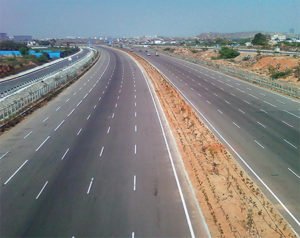Two-way communication
• Emergency Call Boxes (ECB)
• Two-way radios
Traffic management
• Traffic Control Centre (TCC)
Supporting elements
• Fibre optic network
Probable future components
• Speed enforcement systems (Average Speed and Spot Speed)
• Highway Advisory Radio (HAR)
• Traffic information to in-car navigation devices
• SMS alerts to mobile phones
• On the internet (Live traffic cameras or jam cams, and Real-time traffic condition maps)
Monitoring
The following components are included in the HTMS system that will provide information about the operating conditions on the highway.
 Automated incident detection (AID) cameras: The AID cameras will generate automatic alerts when a number of predefined scenarios are detected, such as a slow-moving vehicle, a stationed vehicle and vehicles travelling in the wrong direction. The TCC staff will be able to confirm the generated alerts through video footage and take appropriate action. The AID cameras are being deployed at the ramp merging and diverging points, which are safety critical.
Automated incident detection (AID) cameras: The AID cameras will generate automatic alerts when a number of predefined scenarios are detected, such as a slow-moving vehicle, a stationed vehicle and vehicles travelling in the wrong direction. The TCC staff will be able to confirm the generated alerts through video footage and take appropriate action. The AID cameras are being deployed at the ramp merging and diverging points, which are safety critical.
PTZ CCTV cameras: The PTZ CCTV cameras will provide live video feeds to HMDA personnel in the Traffic Control Centre. They will be deployed at all interchanges for general surveillance to confirm incidents and monitor actions being taken for resolution of the incidents. In future, additional cameras might be deployed to provide 100% surveillance of the whole of ORR.
There are 19 interchanges on the ORR connecting five State Highways, five National Highways (including NH-44 that connects Kanyakumari with Varanasi and carries a large volume of traffic) and a number of radial roads that provide connectivity to growth centres, satellite towns and industrial parks. The radial roads are expected to facilitate opening up of new areas and encourage the shift of industrial and commercial establishments from the city centre.
Automatic traffic counterscum- classifiers: Automatic Traffic Counters-cum-Classifiers (ATCC) can detect, count and classify vehicles. ATCC will be installed on the main carriageway and on ramps as a part of the HTMS system. ATCC will give accurate information about the type and number of vehicles using the ORR. The ATCCs will provide a dataset that can be used to independently audit the Toll Management System (TMS). The data provided by ATCCs will also be used to planning purposes. Moreover, ATCCs can provide vehicle speeds and near-real-time data from ATCCs can be used to detect congestion and potentially incidents. The ATCCs used will be non-intrusive, thereby minimising damage to the road surface during installation.
Meteorological (MET) sensors:
MET sensors can detect and report weather related data such as temperature, rainfall, wind speed and direction and visibility. There are a number of large water bodies in close proximity to the ORR, resulting in fog and reduced visibility during certain times of the year. The information obtained from the MET sensor will be used to detect low visibility conditions and warn the drivers, in advance.
 TrafficInfraTech Magazine Linking People Places & Progress
TrafficInfraTech Magazine Linking People Places & Progress